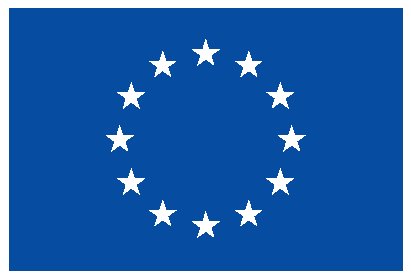A guided data projection technique for classification of sovereign ratings: the case of European Union 27
Javier Sánchez-Monedero [1], Pilar Campoy-Muñoz, Pedro Antonio Gutiérrez [1] and César Hervás-Martínez [1]
Department of Computer Science and Numerical Analysis, University of Córdoba, Rabanales Campus, C2 building, 14004 - Córdoba, Spain.
e-mail: jsanchezm at uco.es, mpcampoy at uloyola.es, pagutierrez at uco.es, chervas at uco.es
This page provides Datasets as well as links to machine learning methods implementation. If you use these datasets please properly cite the associated publication
4. Links to nominal and ordinal classification implementation
1. Citation details
J. Sánchez-Monedero; Campoy-Muñoz, P.; Gutiérrez, P. A. & Hervás-Martínez, C. A guided data projection technique for classification of sovereign ratings: the case of European Union 27. Applied Soft Computing, 2014, 22, 339-350
@article{Sanchez-Monedero2014asoc,
author = {J.~S\'{a}nchez-Monedero and Pilar Campoy-Mu\~{n}oz and P.A. Guti\'errez and Herv\'as-Mart\'inez},
title = {A guided data projection technique for classification of sovereign ratings: the case of European Union 27},
journal = {Applied Soft Computing},
year = {2014},
Month = {September},
Pages = {339-350},
Volume = {22},
}
2. Abstract of the paper
Sovereign rating has had an increasing importance since the beginning of the financial crisis. However, credit rating agencies opacity has been criticised by several authors highlighting the suitability of designing more objective alternative methods. This paper tackles the sovereign credit rating classification problem within an ordinal classification perspective by employing a pairwise class distances projection to build a classification model based on standard regression techniques. In this work the epsilon-SVR is selected as the regressor tool. The quality of the projection is validated through the classification results obtained for four performance metrics when applied to Standard & Poors, Moody's and Fitch sovereign rating data of U27 countries during the period 2007-2010. This validated projection is later used for ranking visualization which might be suitable to build a decision support system.
Graphical Abstract

3. Datasets
This section includes the datasets partitions used for the experiments. All the datasets described in the following above table can be downloaded. Trainning set consist on 2007-2009 period whereas generalization set consist on year 2010 data.
- Sovereign rating dataset for Fitch, Moody’s and Standard & Poors (ZIP compressed file)
- Sovereign rating dataset for Fitch, Moody’s and Standard & Poors (TAR.GZ compressed file)
Each file contains one folder for each dataset containing the 30-holdout train and generalization (test) partitions. Each partition is in four file formats:
- gpor: GPOR like file format, this is, each pattern is placed in a row with space separated attributes. The last column is the class label in a numeric format. GPOR, EBC(SVM), SVOR-IN and SVOR-EX algorithms use this format. The proposed method, SVR-PCDOC, uses this file format also. These algorithms assume the dataset files are ordered by class label in ascending order. KDLOR implementation by SVR-PCDOC uses this format also.
- libsvm: libSVM file format.
- weka: Weka file format.
- nnep: JCLEC-NNEP file format (file format description available at Partitions and Source Code section of AYRNA's website)

4. Links to nominal and ordinal classification implementation
Nominal classification methods:
- C4.5, Mlogistic, MLP, Slogistic implementation is available in Weka.
Ordinal classification methods:
- Frank and Hall meta-classifier is available in Weka.
- Support Vector Ordinal Regression with Explicit Constraints (SVOR-EX) and Support Vector Ordinal Regression with Implicit Constraints (SVOR-IM).
- Gaussian processes for ordinal regression (GPOR)
- Exploitation of Pairwise Class Distances for Ordinal Classification with Support Vector Regression (SVR-PCDOC) (proposed method)







